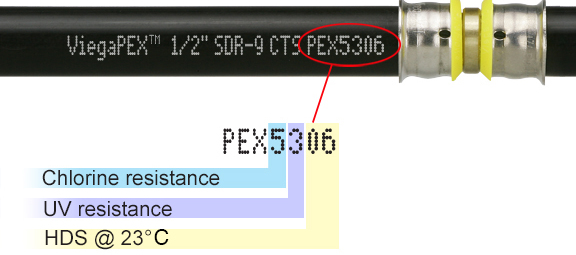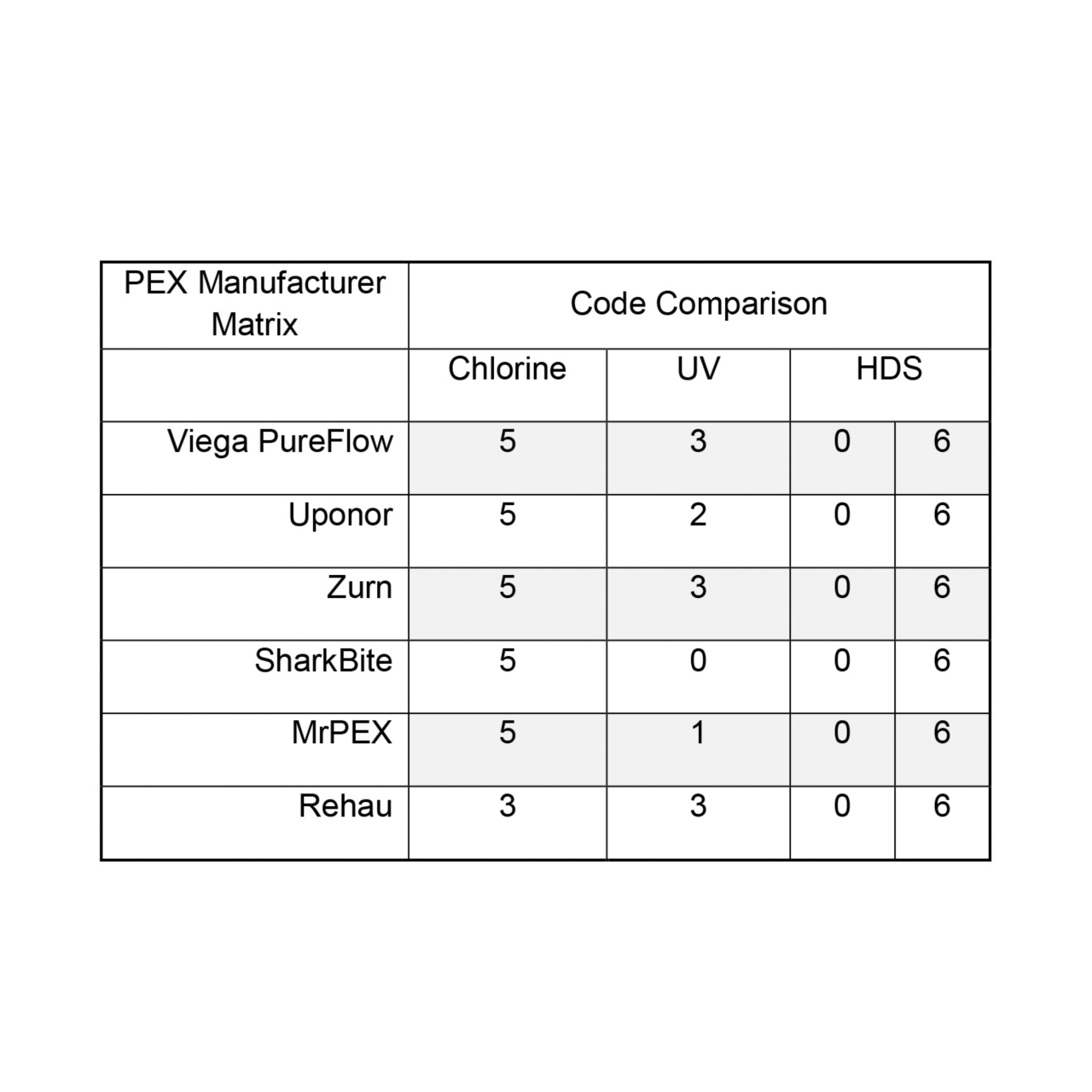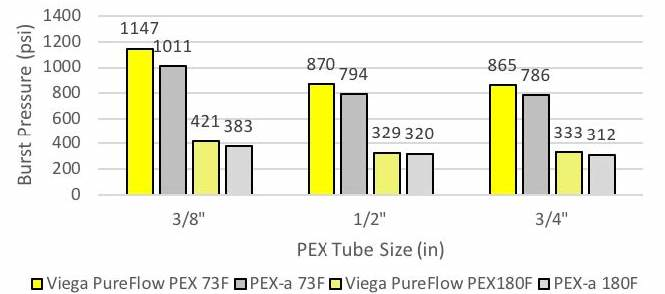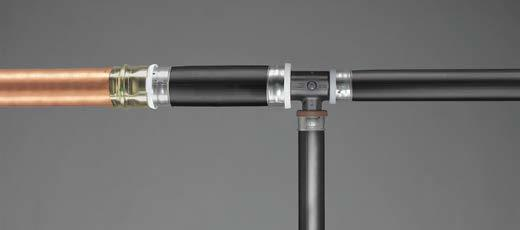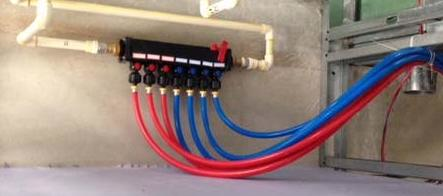PEX material designation codes indicate chlorine resistance, UV resistance and hydrostatic design stress.
The information below will break down the PEX designation standards and provide guidance for selecting PEX products.
Designation Codes: Identifying Chlorine Resistance, UV Resistance and Hydrostatic Design Stress
Many installers are already familiar with the four-digit code printed on each product, known as a “standard thermoplastic tubing materials designation code,” but some might be confused as to what the figures printed on the products mean in relation to the tubing material. For starters, the standard thermoplastic tubing materials designation code is a requirement of ASTM F876, the standard specification for cross-linked polyethylene PEX tubing.
According to the Plastic Pipe Institute, the first digit of the PEX material designation code represents the chlorine resistance tested in accordance with ASTM F2023, the chlorine-resistance test method for PEX pipes.
- A first digit of “0” indicates the tubing either does not meet the ASTM requirement or has not been tested.
|
- A first digit of “1” indicates the PEX tubing was tested and meets the F876 requirement for minimum chlorine resistance at the end-use condition of 25 percent at 140 degrees Fahrenheit and 75 percent at 73.4 degrees Fahrenheit.
|
- A first digit of “3” indicates the PEX tubing was tested and meets the same requirements at the end-use condition of 50 percent at 140 degrees Fahrenheit and 50 percent at 73.4 degrees Fahrenheit.
|
- A first digit of “5” indicates the tubing was tested to meet the same requirements at the end-use condition of 100 percent at 140 degrees Fahrenheit.
|
- A first digit of “2” or “4” is reserved for future applications.
|
High-chlorine resistance is important for applications such as hot-water recirculation systems, which circulate water that is up to 140 degrees Fahrenheit. Buildings with their own water treatment or disinfection systems also require high-chlorine resistance.
The second digit of the PEX material designation code is used to indicate the level of UV resistance for the PEX material when tested in accordance with ASTM F2657, the UV-resistance test method for PEX pipes.
- A second digit of “0” indicates the product either does not meet any minimum UV-resistance requirement or it has not been tested.
|
- A second digit of “1” indicates the PEX tubing was tested and meets the F876 requirement for minimum UV resistance of one month.
|
- A second digit of “2” indicates the product was tested and meets the F876 requirement for minimum UV resistance of three months.
|
- A second digit of “3” indicates the PEX tubing was tested and meets the F876 requirement for minimum UV resistance of six months.
|
UV resistance may not be a top-of-mind factor in selecting PEX tubing. However, for construction applications that have a long schedule or may be prone to delays, a high UV resistance provides peace of mind in the stability and quality of the product when installed.
The last two digits of the PEX material designation code represent the Plastic Pipe Institute’s (PPI) recommended hydrostatic design stress (HDS) at 73.4 degrees Fahrenheit. HDS is determined based on a material-specific design factor applied to the hydrostatic design basis or HDB. The HDB offers values specific to each plastic material type that the Hydrostatic Stress Board has determined, with a high degree of certainty, will not fail within standard operating parameters. For PEX tubing, the HDS can fall within the following range:
- An “06” designation indicates a 630psi HDS.
|
- An “08” designation indicates an 800psi HDS.
|
The value, entered in the following formula provided by ASTM F876, determines the maximum operating pressure the tubing is approved to:
P=2*HDS/(SDR-1) or P=2*630/(9-1); P=157.5 which gets rounded up to 160 psi
For “06” this relates to a 160psi @ 73.4F rating
Designation codes are limited in providing information on tubing performance in that they only indicate if the product meets a standard, not if it exceeds the standard, or by how much. For example, some manufacturers, like Viega, manufacture their PEX tubing to exceed standard requirements by a sizable margin. Through better design, manufacturers can provide superior protection and density to deliver greater quality assurance and performance. Reviewing manufacturer information can provide additional knowledge on product performance and testing to enable the best product selection.
How do various manufacturers compare?

